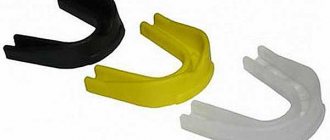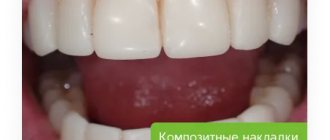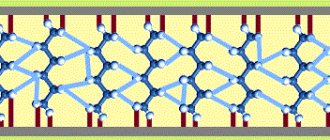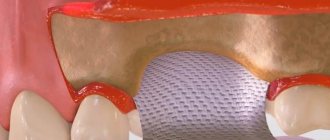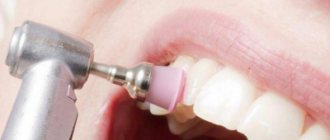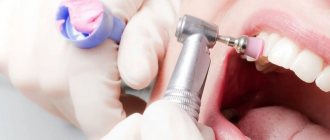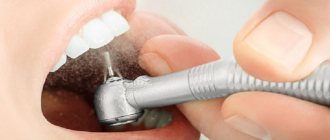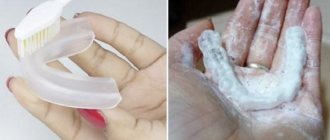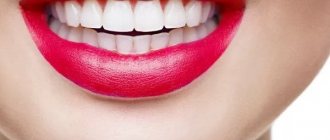Often, beginning athletes do not quite understand why a mouth guard is needed in boxing. For this reason, due to an oversight by the coach, sparring is often carried out without a mouthguard and without a helmet. Even working at half strength, you can easily get injured in the jaw or miss a noticeable blow to the head. You will have to pay for the treatment yourself, especially if you do not have insurance (which is quite common).
What is a mouth guard for?
A boxing mouthguard (cover, plate, dental caps, protective caps) is a special protective device that exactly follows the shape of the human jaw. A correctly selected and applied plate does not cause pain or discomfort to the athlete.
Read also: Is it worth grafting trees in the garden?
A mouthguard is one of the mandatory elements of sports equipment, without which a fighter is not allowed to fight. Its main purpose:
- protecting teeth from falling out or breaking;
- protecting the oral cavity from injury from a chipped tooth;
- protection of gums from cuts;
- preventing the biting of lips, tongue and cheeks during impact;
- reducing the risk of concussion;
- reducing the risk of cervical vertebrae displacement;
- partial protection against knockout.
Unfortunately, newcomers to the world of sports often realize the importance of a mouthguard only after they “lose” a tooth or two in sparring or a fight.
They protect soft tissues
Sure, they protect your teeth from impact, but they also provide extra protection for your entire face from your own teeth! With the correct shape and profile, the protection covers the sharp surfaces of the teeth, preventing them from touching the cheeks, gums or mouth when hit in the face, which in turn also prevents injury and damage.
Which mouthguard to choose
When choosing a boxing mouth guard, remember how much a visit to the dentist costs. “Repairing” one tooth will cost more than a good insert.
Production leaders refused to produce double-sided protectors (for both jaws). Therefore, we will not consider them.
Single-sided plates, as you now know, come in one-, two- and three-layer types. Prices for single-layer protectors start from 150 rubles.
A reliable three-layer Everlast mouthguard , with the maximum degree of protection, will cost 1000-1100 rubles.
What materials are the protection plates made from?
Every athlete sooner or later faces the question: “What material is better to buy a mouth guard from?”
- The most inexpensive are mouthguards made of latex or rubber. As a rule, cast plates are made from this material. Professional athletes do not use such mouthguards due to their inability to reliably protect against serious injuries.
- The average price option is plates made of silicone. They are boiled, and therefore are able to take into account the anatomical features of the athlete’s jaw. These mouthguards are used by mid-level fighters.
- Mouthguards for professional athletes are made from gel-like materials. This material allows you to accurately copy the shape of the athlete’s jaw, and during the fight it provides a high degree of protection.
It is also worth noting that a number of requirements are imposed on the mouth guards of professional fighters. If the plates used by the athlete are not able to provide the fighter with a certain level of protection, then the athlete is simply not allowed to compete.
The process of “cooking” the mouth guard. Why is this necessary?
The “cooking” process involves adjusting the protective plate to the characteristics of your jaw. As a rule, thermoplastic mouth guards are subject to “cooking”. The packaging of this protective element contains detailed instructions for its preliminary preparation before use.
How to properly weld a mouth guard for boxing
The most popular thermoplastic mouth guards must be “prepared” before use, that is, using heat treatment, they must be adjusted as much as possible to the individual jaw structure. Beginners often have problems with this: one is afraid of overheating the protection, and it does not soften, while another, instead of a mouth guard, ends up with a completely melted piece of material that bears little resemblance to the original product. To avoid wasting money, you can take two copies and practice on the cheapest one first.
Clear teeth marks are visible on the “prepared” mouth guard
How to cook kapa correctly:
- the edges of the mouthguard are trimmed if it is large or causes a gag reflex;
- prepare two bowls, one with boiling water, the second with cold water;
- the mouthguard is immersed for 20-60 seconds (depending on thickness and hardness) in hot water;
- then it is quickly transferred to cold water for a few seconds so as not to get burned;
- The mouthguard is put on the teeth and pressed tightly and bitten, helping with your hands and tongue;
- so that the protection remembers the shape, hold it in the mouth in the desired state for about a minute;
- Finally, the mouth guard is dipped into a container of cold water and waited for 5-10 minutes until it hardens completely.
The result should be an onlay that fits perfectly on the teeth and adheres to them independently. On a properly “prepared” mouth guard, teeth marks are clearly visible, but there are no too thin, almost bitten places. Such protection does not interfere with the boxer, but ensures minimal damage even from crushing blows from the opponent.
Boxing mouthguard sizes and flavors
To make boxing comfortable, and for the mouthguard not to interfere with breathing and other functions, it should fit your teeth like a glove. Unfortunately, there is no gradual gradation of sizes; pads are divided into three types: children's, women's, men's. It is necessary, in accordance with age and gender, to choose an available option. If the mouthguard is small, then it is impossible to do anything. An overly large mouth guard can be trimmed from the edges, and then, if it is thermoplastic, the protruding corners can be smoothed out.
The smallest mouthguards are designed for young fighters
An interesting type of mouth guard is flavored. According to manufacturers, they prevent drying of the oral cavity, help normalize breathing and refresh it. Due to the fact that the flavor is embedded in the material, the service life of the mouth guard is long and is not limited to a couple of uses. You can choose protection with the flavors of orange, mint, apple, lemon, and even chewing gum. The downsides are the distraction factor and the fact that the taste gets boring quickly.
Cooperation between Dial-Dent and the promotion company
The largest Russian promotion was organized by Russian businessman Andrei Ryabinsky in 2012. The company organizes and conducts boxing shows with the participation of world-famous boxing stars. The organization of the fight between Vladimir Klitschko and Alexander Povetkin - two great heavyweight boxers - in 2013 brought fame and worldwide fame.
The nice thing is that World of Boxing has not only the goal of making money from staging fights, but also has a great mission - to raise and develop Russian boxing to the world level. Holding fights in Russia and developing young athletes to the level of formidable professionals is the company’s priority.
Family Dental is a long-time partner. "Dial-Dent" as a partner participates in almost every event organized in Moscow. We have made boxing mouth guards for many athletes competing for this promotion company. We also provide athletes with quality dental care.
In the video below you can see the process of making a custom mouth guard for Georgy Chelokhsaev:
Features of alignment using a mouthguard
To straighten your teeth, you need to visit an orthodontist. The specialist will examine the oral cavity and tell you whether mouth guards can be used. If no contraindications are found, then a three-dimensional cast is made , and then a plaster model and several aligners are created, taking into account individual characteristics. In particularly difficult cases, the kit contains about 30 products.
At the next visit, the first tray is installed, and the rest are given to the patient. During the treatment process, a person replaces the structure every 2-3 weeks. In addition, it is recommended to visit a doctor every 1-1.5 months to monitor the alignment of your teeth.
The duration of treatment directly depends on the degree of deformation of the dentition. In the simplest cases, it will take only 2-4 months to correct the defects, and in complex situations, treatment will take 1-2 years.
Advantages and disadvantages
Wearing this orthodontic structure provides the Patient with a number of advantages:
- made of transparent material and invisible to others;
- These are removable devices that allow full oral hygiene and food intake;
- in the manufacture of mouth guards, hypoallergenic materials that are safe for enamel and mucous membranes are used;
- do not cause diction problems;
- quick adaptation period;
- copes well with problems of malocclusion in children, and is actively used in pediatric orthodontics;
- easy to maintain and carry out daily hygiene procedures, does not require special cleaning products or special cleaning techniques;
- works well in complex therapy in the treatment of teeth grinding and bruxism.
The disadvantages include:
- does not correct serious malocclusions;
- the time of using the mouthguard is controlled by the Patient himself, so the result largely depends on his conscientiousness;
- the aligner does not correct serious defects - crowded teeth, severe curvature;
- high cost of some types of caps.
Care of mouth guards
The rules for caring for mouthguards are quite simple. The mouth guards are removed before eating and brushing teeth and washed with warm running water. Periodically clean the veneer with a brush and toothpaste, just like your teeth. To store the mouth guard, use a special container with water to protect it from contamination. To carry the structure, you need to purchase a case.
Under no circumstances should mouth guards be boiled; only pharmaceutical disinfectants are used for their sanitization. If the mouthguard is damaged, it is strictly forbidden to wear it - this may disrupt the entire treatment plan. If the Patient discovers a crack, break or other defects on the mouth guard, you should immediately contact your doctor.
The mouth guard requires daily cleaning. A toothbrush, toothpaste or antibacterial oral solution is suitable for this. It is important not to use boiling water or drink too hot liquids during the course of correction using a mouthguard.
Price
The cost of a course of treatment depends on many factors. The main one is the price of the dental guard itself. You can buy a mouthguard for teeth in St. Petersburg for an average of 10,000 rubles, with prices ranging from 4,000 to 20,000 rubles.
The duration of treatment with mouth guards can vary from three months to several years. Many Patients are mistaken, thinking that it is enough to buy a single copy of a dental guard. During the correction process, it is necessary to change the trays every two weeks - usually at least six systems are required to correct dentofacial anomalies. That is, the average cost of the course will be 60,000 rubles.
It also depends on the individual characteristics of the patient’s teeth and gums, the degree of the disease and the types of treatment. Sometimes the doctor offers several ways to solve the problem; it happens that longer treatment is required (in especially difficult cases) than previously planned. In this case, the price may be higher than planned.
At the MY ORT clinic, the cost of treatment is announced to the Patient after the treatment plan is prescribed, is fixed in the contract and does not change throughout the entire treatment period.
About Us
The clinic of orthodontics, gnathology and aesthetic dentistry “MY ORT” specializes in the correction of malocclusions and dentofacial anomalies. Our specialists constantly care not only about the quality, but also about the availability of orthodontic treatment. In the “Promotions and Discounts” section, we have prepared several profitable promotional and discount offers to make orthodontic treatment with us as accessible and convenient as possible for you.
You can ask any questions you are interested in and make an appointment with an orthodontist by calling: +7 812 989-13-49.
How to “cook” a mouthguard correctly
Almost all existing thermoplastic linings are prepared according to the same principle, and most often a dental guard for boxing is sold with instructions that indicate everything necessary. In general terms the process looks like this:
We choose any container for boiling water, into which the selected mouthguard can fit entirely.
Place the pan on the fire, let the water boil and lower the cover into it. Make sure it is completely under water.
Keep in boiling water for no more than half a minute.
Remove from the water, wait a few seconds to avoid burns (be careful not to let it cool completely), and place it on your teeth. After this, clench your jaws tightly, apply pressure and press the outer sides of the mouth guard to your teeth.
Proper preparation can be judged by how comfortably and tightly it sits on the teeth when cooled.
Why is it needed?
A boxing mouthguard is a plastic device that is worn over the teeth to protect against jaw fractures, tongue biting, and even concussions. Why do you need a mouthguard for teeth in boxing? Simply put, it is needed to withstand a blow, to minimize head concussion. The mouthguard can be one-sided or two-sided. The first one is used most often. There are different sizes of mouth guards. Also, the very first putting on requires special conditions. It must be immersed in boiling water for about half a minute, put on and clenched your jaws. After this, immerse in cold water to harden. In any case, a description of how to prepare the mouthguard is always included in the package.
How are aligners different from braces?
Both mouthguards and braces are used to correct bites in adults and children, but these designs have significant differences that determine both the disadvantages and advantages of each of them. To make it easier for patients to navigate in choosing the appropriate correction method, below is a table with a comparative analysis of both systems.
Aligners or braces
Table. Mouth guards and braces: comparison.
| Characteristics | Mouthguards | Braces |
| The effectiveness of bite correction | Effective only for minor bite pathologies. | Can be used for severe deformation of the dental system (including severe and complicated cases). |
| Wearing period | From 8-10 months to 2 years. | From 1 year to 2-3 years. |
| Possibility of use in childhood | Can be used in childhood (treatment of bruxism using silicone teethers is especially common). | It is acceptable to use in children over 5 years of age, but the possible risks of enamel damage must be taken into account. |
| Visibility to others | Mouthguards are made of transparent silicone or bioplastic and are practically invisible on the teeth, which makes their use more comfortable and provides psychological comfort to the patient. | Vestibular braces, which are installed on the front surface of the teeth, are clearly visible to others. If these are ordinary metal braces, wearing such a design can cause emotional distress for the patient (especially children and adolescents). |
| Comfort to use | Adaptation to the aligners usually occurs almost immediately after installation. In rare cases, this process may take 3-5 days. | Nagging pain and discomfort when wearing braces can appear at any time as the teeth gradually shift. The duration of such periods can range from 2-3 days to several weeks. |
| Degree of gum trauma | Due to the soft materials, the mouthguards practically do not injure the mucous membranes and soft tissues of the oral cavity. | Braces can have a destructive effect on tooth enamel and damage the mucous membranes of the tongue, lips and gums. |
| Possibility of removal without visiting the dental office | Maybe. | Impossible. |
| Ease of hygienic care | The mouthguard can be easily removed from the mouth to clean the teeth and the structure itself, which ensures a high level of hygiene during orthodontic treatment. | The level of hygiene when using brace systems is quite low due to the inaccessibility of surfaces covered with orthodontic brackets and locks. |
| Price | From 6 to 15 thousand rubles for one mouth guard. | From 70,000 rubles. |
At first glance, it may seem that treatment with mouth guards is a cheaper option compared to braces, but this is not the case. Aligners must be changed regularly, and one set can contain up to 25-30 drops per course of treatment. The total cost of the course is usually more than 200 thousand rubles.
Diagram of the results of treatment with mouthguards
We invite you to read: Chronic periodontitis treatment - Dr. Dent
Do mouth guards for straightening teeth help eliminate defects in the dentition and how is the treatment carried out?
Mouth guards, or aligners, are used not only to correct bite pathologies, but also as a supportive measure after braces are removed.
The winners of the social campaign “Transformation of a Smile” will receive dental restoration services free of charge.
Aligners can correct not only crooked teeth, but also some types of malocclusion.
Orthodontic aligners are designed to correct minor dental defects and are indicated mainly for adults and older adolescents.
Caring for your aligners is easy—just rinse them daily with water and brush the inside with a toothbrush.
The aligners, thanks to their transparent design, are able to provide an aesthetic appearance and are suitable even for those who cannot wear braces due to their duties - fashion models, media and show business workers.
Few of us can boast of perfectly straight teeth: most have one or another problem with bite. And this is not just a cosmetic flaw. Bite pathologies can lead to tooth decay, impaired diction, digestive problems - and this is just a short list of consequences. Therefore, it is necessary to correct the bite.
However, even adults are often reluctant to do this, because braces, which are used to straighten teeth, are very uncomfortable. However, not everyone knows that there is an alternative - mouth guards for straightening teeth. How do they differ from the usual plates and can such mouthguards really help?
Design features
Here we can distinguish three main types, we will arrange them in order of increasing quality and characteristics.
Standard (cast)
These are universal factory mouthguards that do not have outstanding characteristics. They are made of plastic (there are also silicone versions), inexpensive, and quite suitable for beginner amateur athletes. The main disadvantages are poor fixation, standard shape, without the possibility of changes, and insufficient thickness.
Thermocaps (thermoplastic)
This type of mouth guard is a kind of semi-finished product - the product requires individual adjustment, which is done at home (“brewed” and conveys the structural features of the teeth, jaw, and bite). They can have a multilayer structure (a combination of materials is used) and have good fixation.
Custom mouth guards
They are used by professional athletes and are made to order from the dentist (an individual impression of the jaw and bite is made). These mouthguards provide maximum protection and have shock-absorbing properties. Modern technologies make it possible to produce neuromuscular mouthguards that are able to respond to changes in muscle forces (involuntary clench/unclench the jaw) and find the optimal position.
Types of trays according to manufacturing method
In dentistry, several technologies are used to make mouthguards for teeth.
- Standard. They have the typical shape of the correct position of the dentition. Most often, such designs can be purchased immediately, rather than waiting for production. The advantage of this option is the affordable price, since standard overlays are the most budget-friendly.
- Individual. These systems are advantageous because they are tailored to the individual characteristics of the jaw structure and dentition position of the patient. The overlays are made from casts after computer modeling. The cost of such aligners is higher, but their effectiveness is higher.
- Thermoplastic. This type of construction is used more often for bite correction. The peculiarity of thermoplastic linings is that they are made of a hard material that softens under high temperature.
Based on the material used, mouthguards are divided into bioplastic and silicone. The time range for their use also differs – from a few minutes to 24 hours.
Why do you need dental guards?
Dental mouthguards are needed to correct deficiencies in the dentition. In accordance with the wishes of the patient and the condition of his oral cavity, the doctor selects a suitable system. Mouth guards are placed on the teeth to correct anatomical defects, to consolidate the results of orthodontic treatment, or during teething, to set the teeth in the right direction. Onlays are also used in aesthetic dentistry.
To correct the bite
Most often, transparent overlays are used to correct anatomical defects. They are an alternative to braces and can easily replace metal braces. In this case, aligners have advantages, since they do not require special dietary restrictions and do not interfere with the aesthetics of the smile with metal plates.
On a note!
For adults, this option for correcting defects is ideal. It is less suitable for children, since it is not always possible to control how long the structure will be worn.
Mouthguards for correcting bites require constant wearing. At the initial stages of treatment, they can be removed only for hygiene procedures and during meals. The patient needs to wear the system around the clock, so it cannot be abandoned even at night. You will have to wear aligners to correct your bite from six months to one and a half years, depending on the severity of the anatomical defects. Plates are not suitable for all patients, since in difficult cases the installation of braces is still required.
For teething in children
The eruption of permanent teeth in a child may occur unevenly and untimely. If the baby tooth has not yet fallen out, but the molar is already growing, then it may take on the wrong position.
On a note!
Up to 50% of children aged 8–10 years experience crooked teeth. To avoid having to get braces in the future, you need to take care of the beauty of your smile line now.
Teething mouthguards for children are made individually. Most often, their use is limited to 4-6 months.
For whitening
Trays can be used to lighten enamel. Such designs are most often used at home and do not require an additional visit to the dentist.
The principle of operation of the whitening pad is based on preventing the rapid washing off of the lightening substance from the surface of the tooth. Using a syringe, it is applied to the enamel, after which a tray is secured on top. The wearing period of the system is described in the instructions for use and differs for different whitening substances.
For the treatment and restoration of enamel
Trays for enamel restoration are often used after professional whitening. As a result of exposure, tooth sensitivity increases. For treatment, dentists prescribe remineralizing gels with a high fluoride content. They are applied to the mouthguard, after which the lining is installed on the dentition. For each patient, the treatment period and duration of use of the medicine are determined individually.
For bruxism
Bruxism is a condition in which a person suffers from teeth grinding. Most often this happens unconsciously, during sleep or during stressful situations. Bruxism accelerates the wear of enamel. This leads to increased sensitivity and decreased aesthetics of the smile line. To protect against tooth friction at night, it is recommended to wear mouthguards. They are made of dense elastic material and are worn over the entire surface of the tooth or only half.
Retention systems after wearing braces
Correcting a malocclusion using a braces system is an effective and reliable method. After the jaw and dentition have assumed the correct anatomical position, the staples are removed. However, for old times’ sake, teeth may begin to shift in the opposite direction. Sometimes they take a completely unexpected position. Aligners or retention systems help prevent this complication.
The structures are made of rigid transparent material individually for the patient and require use for 20-22 hours. Such mouthguards hold the teeth in a new position and prevent them from becoming deformed again.
Protective sports
Protective sports systems have different characteristics and indications for use. They are:
- three-layer – suitable for water polo, rugby, hockey, boxing;
- two-layer – required for martial arts, field hockey, skateboarding, basketball and American football;
- single-layer – needed by non-professional athletes, as well as children who play sports.
Important!
When playing some sports, it is necessary to wear a mouthguard, since there is a high risk of tooth injury. This can lead to premature loss of the unit and the need for prosthetics. All this is associated with financial costs and loss of time.
Using dental protection is a long-term investment in your career
Wearing a mouthguard does not necessarily guarantee that you will not get injured during training or competition in combat sports. Using this item is still a significant investment in your safety. In addition to saving on dental work, protecting against injury to your teeth, soft tissues and jaw itself, you will likely feel much better and more comfortable. Plus, you won't have to stop training due to accidental injuries. Investing in a mouthguard for regular training and competition is a small but very wise step you can take to keep your training fun and without unnecessary fear of injury.
If you decide to complement your training equipment with this element, we invite you to our mmawear.ru store to choose a suitable mouth guard.
How to “cook” a boxing mouthguard, instructions (video)
In fact, there is no need to cook the kapa. The workpiece is immersed in hot water (80-90° C) for 30-60 seconds. The exact time and water temperature are indicated in the instructions.
Then the plate is taken out, shaken (or dipped in cold water for 1 second) and put on the teeth.
The plate is pressed on the teeth with your fingers. The insert must be pulled over the gum and pressed tightly against the teeth.
After the protector is placed on the upper jaw, you need to close your teeth and bite down. There is no need to clench your teeth too hard to avoid biting through the protector.
The last step is to immerse the liner in cold water.
To reinforce the information, watch the video. It's easier to see once than to read twice.
Popular questions
Can a mouthguard be used instead of braces?
Mouthguards are used to correct malocclusions, but they are not suitable for all clinical cases. Serious anomalies cannot be corrected with their help: this requires braces or a combined approach, in which plates are used only at the final stage of treatment.
The mouth guard is cracked, what should I use to seal it?
You should not try to repair or seal a cracked or chipped mouth guard yourself: a broken device can damage your teeth. If you find mechanical damage to the mouthguard, you must stop wearing it and consult your doctor.


